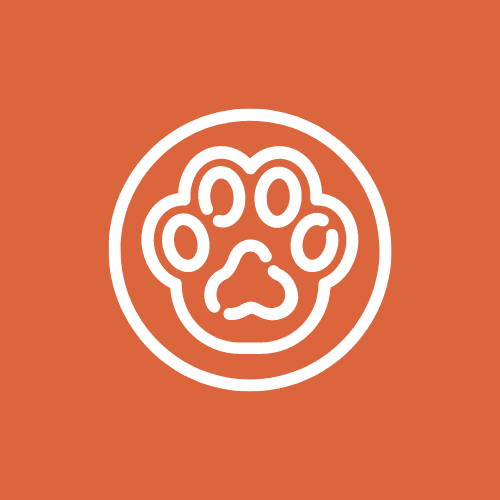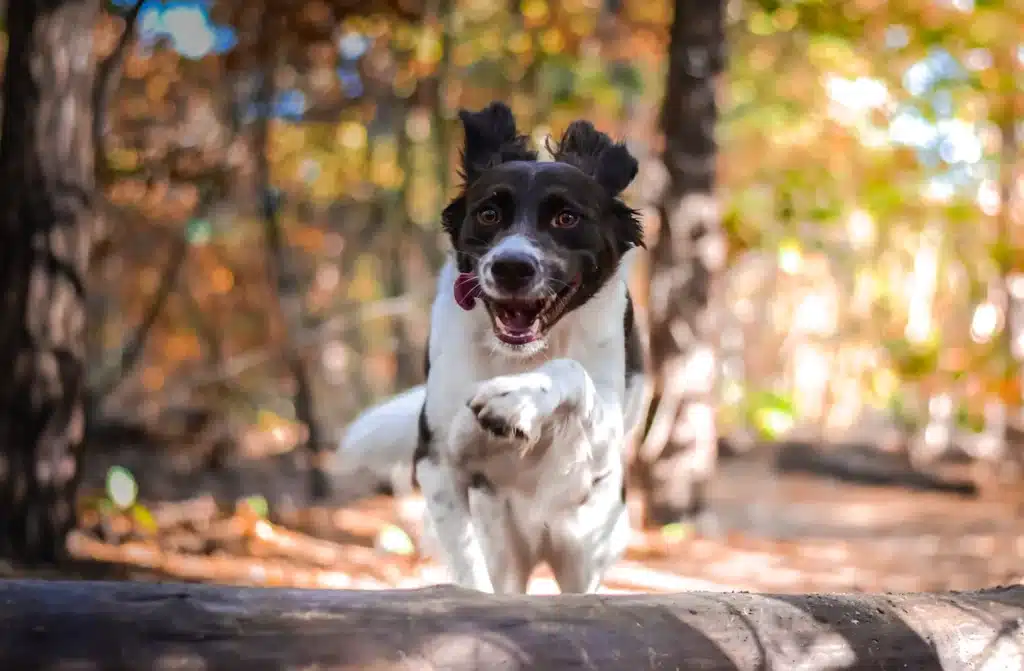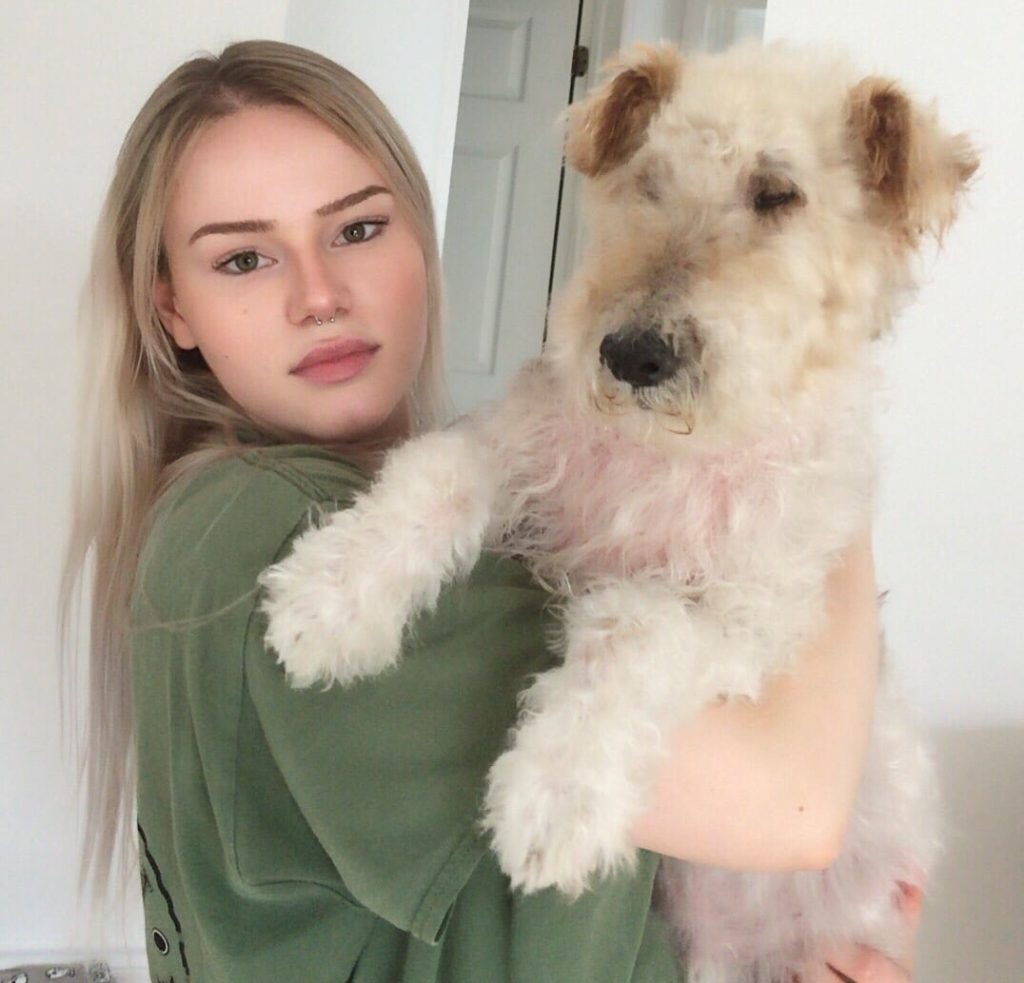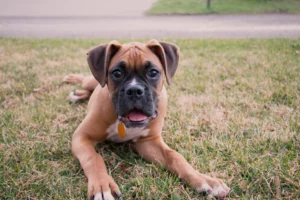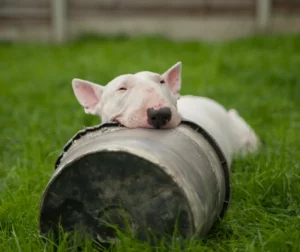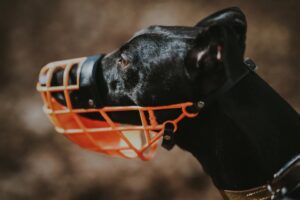A dog can be overly excited for reasons like nervousness, lack of stimulation, or hyperactivity.
The first question one must ask is; why is my dog excited? There is always a reason why a dog is overly excited, even if it is not obvious at first glance. Knowing the source of the problem makes it easier to know how to deal with his behavior.
With these tips, it is possible to help your dog calm down by teaching him self-control and allowing him to express natural behaviors. This will make it much more simple for you to manage his behavior throughout his life.
How to calm an overly excited dog?
#1 – Meet His Basic Needs
The first step to calming an overly excited dog is to meet his physical needs.
A lack of physical and mental exercise creates frustration and stress. This is why it is essential to meet his needs to avoid behavioral problems, such as aggression.
So, by giving your dog enough exercise, you can calm him down and reduce his behavioral problems, such as barking, jumping, and biting. Thus, you will have a mentally and physiologically balanced dog, and will increase the frequency of relaxation behaviors.
To meet his physical needs, you can play tug of war, go for a run, play dog sports, use a flirt pole, or take a long walk in nature. Choose activities where your dog can run and jump freely so that he can exert himself completely.
Avoid laser pointers, as they can cause confusion, frustration, and many other problems.
#2 – Keep Him Busy
Keep your dog occupied by providing several types of mental stimulation. It is beneficial to diversify the activities every day to offer him an enriching environment. This way, you can prevent the task from becoming too easy and boring for him.
To diversify the activities, use several types of interactive bowls, treat dispensing balls, and licking mats. It’s best to always feed your dog using these types of activities to provide him with interactive feeding that he would otherwise find in the wild.
You can also get a snuffle mat. This is a great activity, especially for terriers, since it’s natural for them to sniff, dig, and go underground to dislodge animals.
To create a snuffle mat, take one towel (or more), distribute his kibble on it, then crumple it. Thus, we create several small crevices so that he can search with his muzzle and collect his kibble one by one.
Another way to occupy your overly excited dog is to provide him with a chewing activity. Chewing is an essential need that must be met every day.
For example, you can give him a stuffed Kong, a raw bone, a bully stick, a duck leg, a Yak cheese, or a deer antler. Prioritize natural products and avoid low-end products, especially rawhide as it can cause many health problems.
Check out our article “Dog Bones & Chews: The Best and the Worst” for more ideas and tips.
#3 – Play With Other Dogs
Playing with another dog has been proven to be the best way to positively change your dog’s behavior. We notice that the dog is much more relaxed, sociable, and less stressed than usual.
This is because he can express a wide range of natural behaviors. Thus, he can use all his physical and intellectual abilities which are the key to calming an overly excited dog.
In addition, we notice that excessive barking, vocalizations, and symptoms of stress, such as constant licking, are reduced.
#4 – Teach Basic Commands
Teaching your dog basic commands is fundamental to helping him learn self-control and avoid dangerous situations.
By asking him to sit or lie down, you can help him calm down. This technique works best if the dog has been mentally and physically exhausted before asking the command.
In addition, this technique must be practiced daily or several times a week for it to be effective. Be sure to practice in a quiet place where there are very few distractions, such as his bed or a quiet room.
The place you choose should always be the same so that he can associate the place with the behavior. This way, he can anticipate when it’s time to relax and it will be much easier for him to calm down.
Incorporate this exercise into your routine after physical activity and anytime your dog comes back inside after doing his business.
#5 – Impulse Control Exercise Before Going Outside
For a dog that is overly excited before going outside, it can be useful to give him a command before opening the door, especially if he pulls on the leash.
Ask him to sit or lie down before you go out and wait for him to calm down. If you touch the door and he gets up and becomes excited again, repeat the exercise until you can open the door without him getting up.
Being calm before going outside will make it easier for your dog to control himself once outside. The same principle applies to the overly excited dog in the car.
#6 – React at the Right Time
If your dog seeks your attention by yelping or jumping on you, ignore him. You reinforce his behavior and increase his excitement by continuing to give him your attention.
When your dog becomes excited because he sees someone or something, redirect his attention to an appropriate activity, like a puzzle game. Keep him busy with the methods mentioned above.
To train your dog, timing is very important. The longer we wait before correcting a behavior, the more difficult it will be to do so.
In addition, you will have to be constant in your interventions to see an improvement. Lack of consistency is a very common mistake among dog owners. Often, they will become discouraged since they do not see results fast enough.
Depending on the dog’s energy level, it may take many times before you see any improvement.
Typically, it takes about 1 month before you see a big improvement. Provided that you reacted immediately and every time your dog exhibited the behavior problem.
#7 – Have a Routine
Having a routine is important to control your dog’s habits.
Establish a schedule that will be the same every day so that your dog can anticipate when it is time to relieve himself, eat, chew, exercise, and relax.
Thus, it will be much easier for you to control his excitement, his chewing habits, his desire to eat, and his needs.
#8 – Play Some Music
There is music with specific frequencies to calm dogs. It is therapeutic music that has been clinically tested. It can also serve as a therapeutic tool for anxious dogs that can be used both in the car and at home.
Several options are available to you to obtain this music. The best options are Victoria Stilwell’s Positively Calming CD or the Pet Acoustics device.
You can also go to the YouTube channel Relax My Dog which offers a multitude of music according to different behavior problems.
#9 – Natural Calming Supplements
It is possible to get supplements containing L-theanine which helps to relax. These are natural amino acids found in black and green tea leaves.
L-theanine contains properties that help reduce stress and anxiety, as well as improve sleep for both dogs and humans. It can even be used to prevent viral infection.
You can find this supplement in pet stores as a treat or tablet.
There is also CBD oil that acts on the nervous system and provides many benefits. This oil has been proven to help dogs that suffer from epileptic seizures and anxious, aggressive, or hyperactive dogs. It can also help those who suffer from osteoarthritis.
This oil is excellent not only for dogs and cats but also for humans.
#10 – Contact a Dog Trainer
A nervous dog may seem excited when he has difficulty relaxing, is constantly active, destroys objects, jumps, or barks excessively.
In any case, if your dog exhibits one or more of these behaviors, especially when you leave the house, it would be best to contact a dog trainer or behaviorist.
If you have implemented all the advice and you are unable to calm your dog, it would be beneficial to ask for the help of a dog trainer. He will be able to guide you by showing you how to have the right reactions as well as the right timing.
In addition, he will find the source of the problem and give you exercises adapted to your situation.
It can be difficult to know what to do to calm your dog and sometimes it is recommended to turn to medication that will be prescribed by your veterinarian.
The dog trainer will be able to advise you on your choices.
